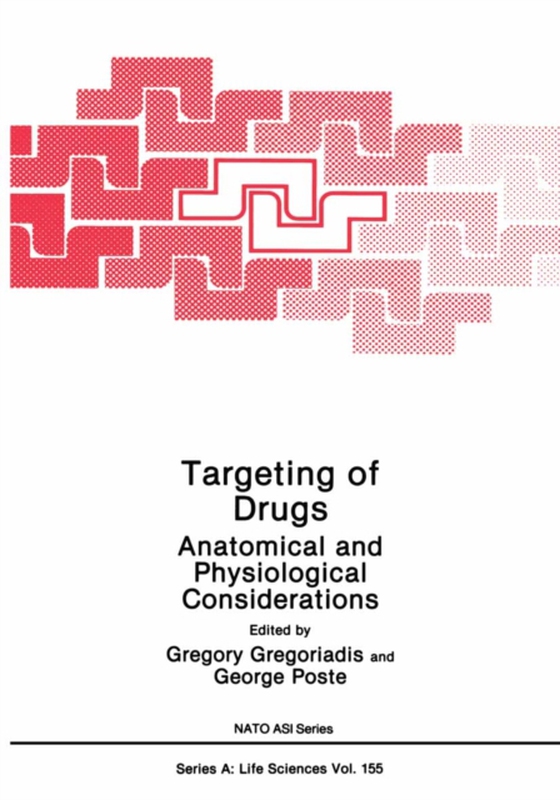
Targeting of Drugs e-bog
436,85 DKK
(inkl. moms 546,06 DKK)
A major vehicle for the transition of carrier-mediated drug delivery from a theoretical/experimental status to one with practical uses has been the NATO Advanced Studies Institute series "e;Targeting of Drugs"e;. Three previous ASls of the series[1-3], also held in Cape Sounion, dealt with carriers of natural and synthetic origin, their preparation and drug incorporation as well as a wi...
E-bog
436,85 DKK
Forlag
Springer
Udgivet
6 december 2012
Genrer
Anatomy
Sprog
English
Format
pdf
Beskyttelse
LCP
ISBN
9781468455748
A major vehicle for the transition of carrier-mediated drug delivery from a theoretical/experimental status to one with practical uses has been the NATO Advanced Studies Institute series "e;Targeting of Drugs"e;. Three previous ASls of the series[1-3], also held in Cape Sounion, dealt with carriers of natural and synthetic origin, their preparation and drug incorporation as well as a wide range of applications. This book contains the proceedings of the 4th NATO ASI "e;Targeting of Drugs: Anatomical and Physiological Considerations"e; held in Cape Sounion, Greece during 20 June - 1 July 1987. Historically, carrier systems have been chosen on the basis of selective affinity for target sites. For instance, monoclonal antibodies bind selectively to antigens on the surface of cells and the same applies to ligands such as certain glycoproteins which bind to cell receptors. Colloidal carriers on the other hand, are "e;passively"e; targeted to the reticuloendothelial system. However, effective drug delivery depends not only on demonstration of affinity of the carrier system for its target but also, and perhaps crucially, on the way(s) by which the carrier-drug entity interacts with the interposed biological milieu. The book deals in depth with a number of biological milieus as travelled space for carriers en route to their destination, difficulties arising from unfavorable milieu-carrier interactions and ways to circumvent such difficulties. It also identifies, when possible, situations where proposed uses would or would not be realistic and provides perspectives for future goals.
 Dansk
Dansk

